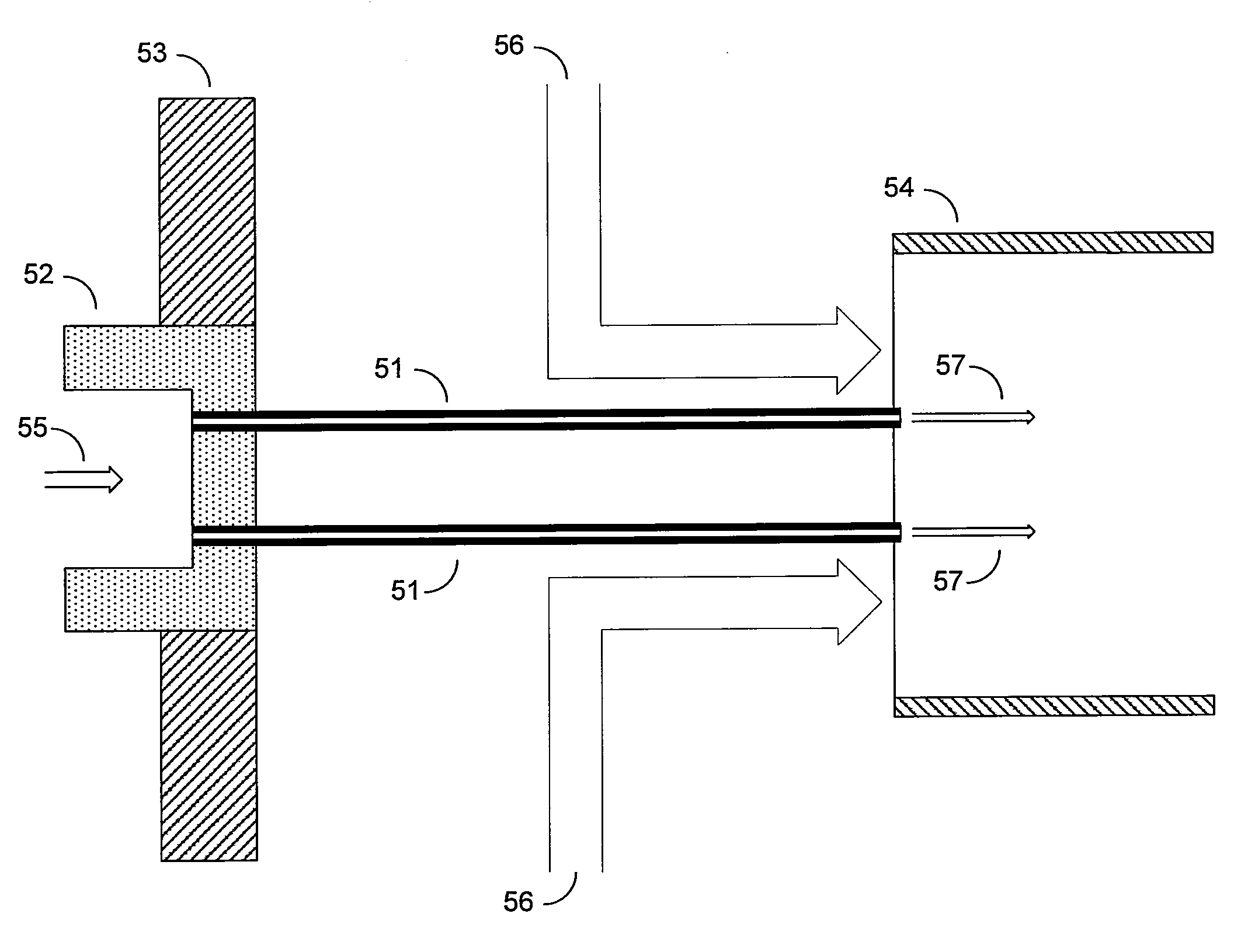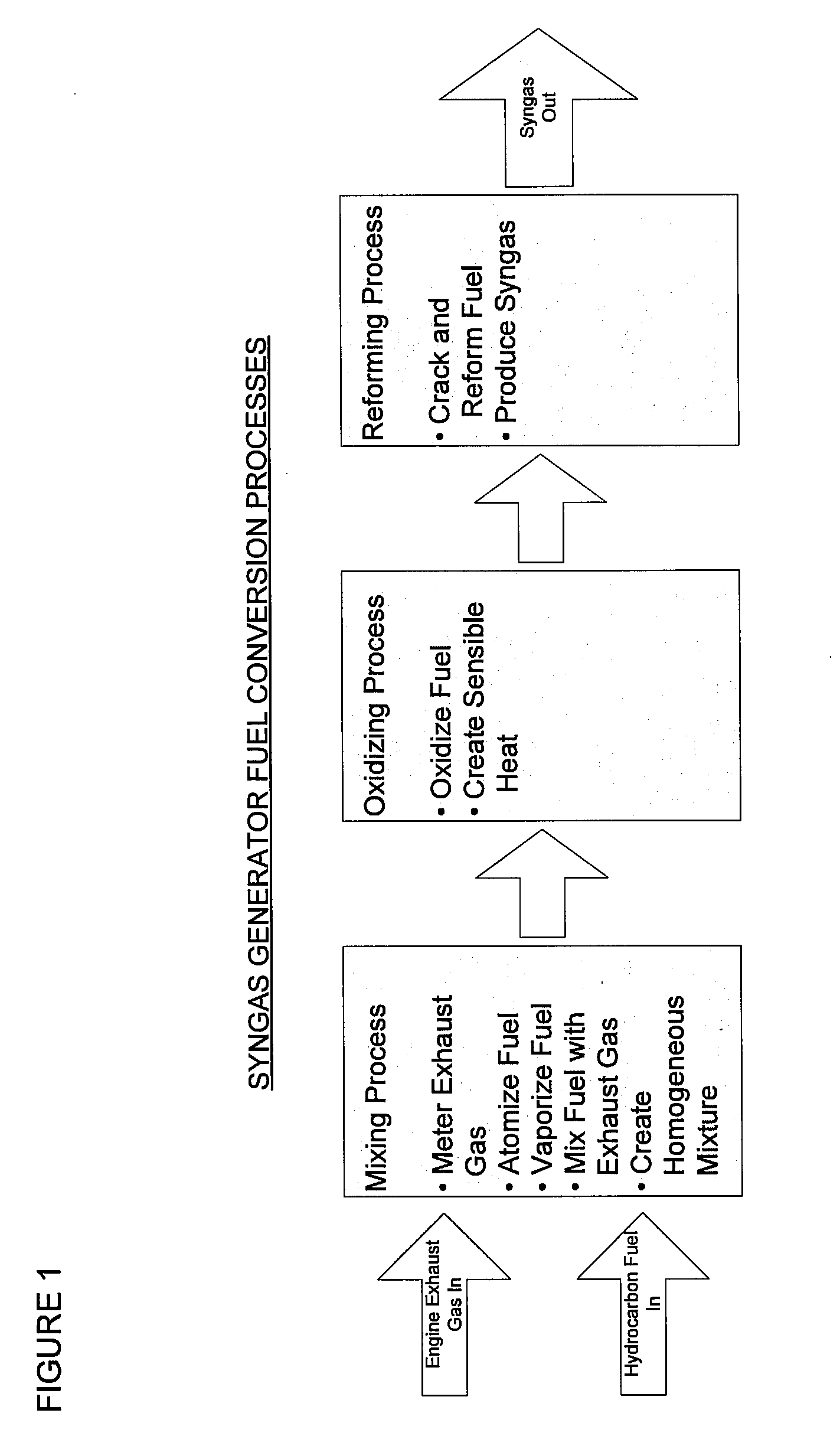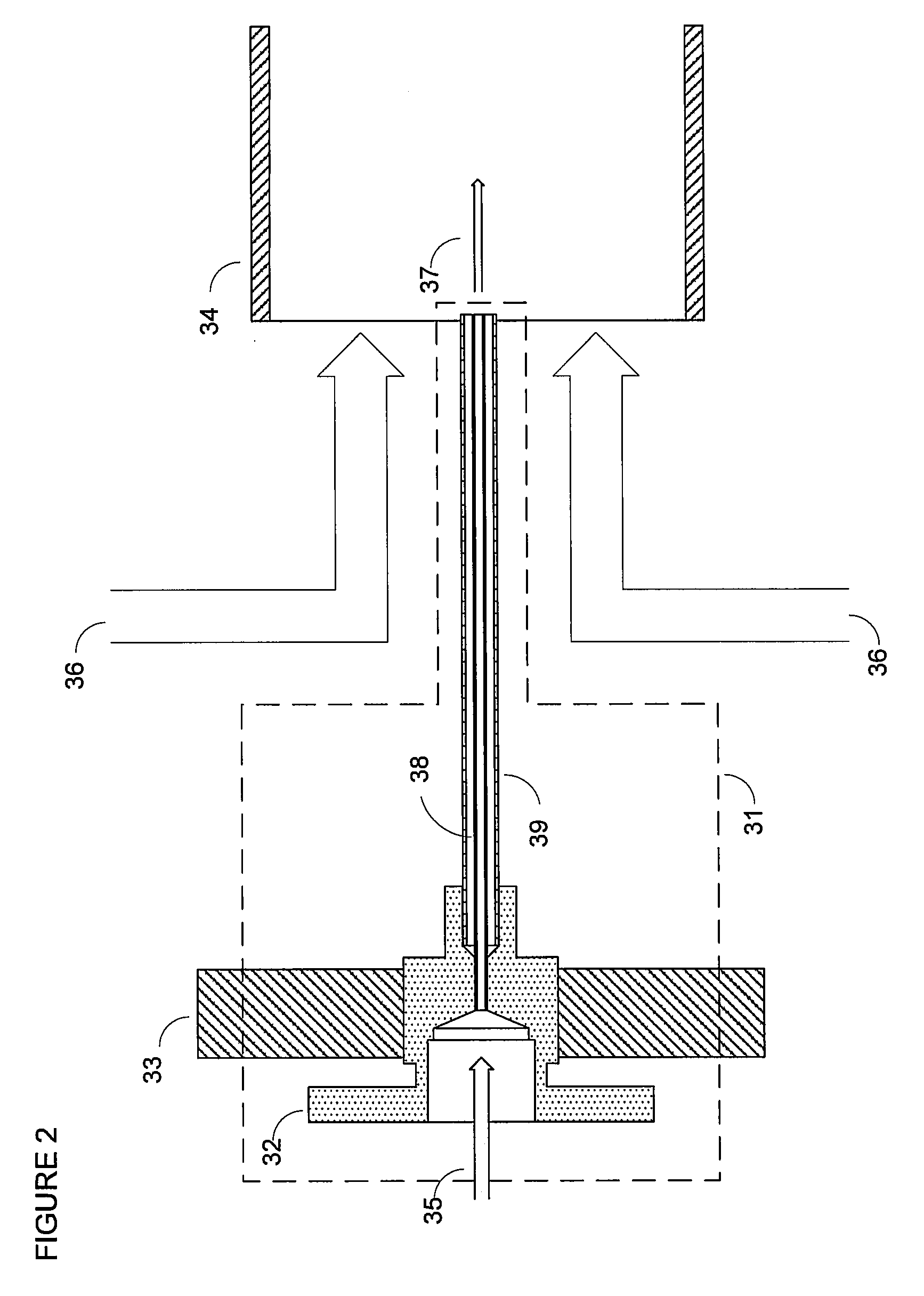Fuel Processor, Components Thereof and Operating Methods Therefor
- Summary
- Abstract
- Description
- Claims
- Application Information
AI Technical Summary
Benefits of technology
Problems solved by technology
Method used
Image
Examples
Embodiment Construction
)
[0084]FIG. 1 illustrates a typical syngas generator (SGG) fuel conversion process, and is described above.
Embodiments Comprising a Fuel Introduction Tube
[0085]The present apparatus comprising a fuel introduction tube is particularly suited for introducing liquid fuels into hot oxygen-containing gas streams for downstream chemical conversion in a fuel processor. In situations where the temperature of the hot gas stream exceeds the boiling point of the liquid fuel at least some of the time during operation of the fuel processor, preferably the fuel introduction tube comprises thermal shielding. Similarly, methods of introducing a liquid fuel into a hot oxygen-containing gas stream comprise utilizing a fuel introduction tube as described herein. The fuel introduction tube can be passively or actively thermally shielded to reduce boiling of the fuel within the introduction tube, and preferably to maintain the liquid fuel stream below its boiling point within the fuel introduction tube....
PUM
| Property | Measurement | Unit |
|---|---|---|
| Fraction | aaaaa | aaaaa |
| Angle | aaaaa | aaaaa |
| Pressure drop | aaaaa | aaaaa |
Abstract
Description
Claims
Application Information
 Login to View More
Login to View More - R&D
- Intellectual Property
- Life Sciences
- Materials
- Tech Scout
- Unparalleled Data Quality
- Higher Quality Content
- 60% Fewer Hallucinations
Browse by: Latest US Patents, China's latest patents, Technical Efficacy Thesaurus, Application Domain, Technology Topic, Popular Technical Reports.
© 2025 PatSnap. All rights reserved.Legal|Privacy policy|Modern Slavery Act Transparency Statement|Sitemap|About US| Contact US: help@patsnap.com



